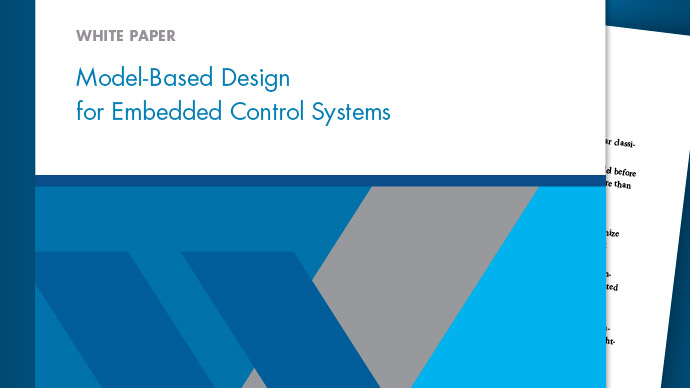Manage Design Data
You can use MATLAB®variables to configure and manage signals and block parameters in a model. For more information about how models use variables, see年代ymbol Resolution. To create, edit, and manage variables, seeCreate, Edit, and Manage Workspace Variables.
You can store model variables in the MATLAB base workspace, a model workspace, or a data dictionary. To decide where to store variables for your model, seeDetermine Where to Store Variables and Objects for Simulink Models.
To use variables to control signal and parameter characteristics, such as data types and code generation settings, you can store data objects in a workspace or data dictionary. SeeData Objects.
Functions
Classes
年代imulink.ModelWorkspace |
Interact with the model workspace of a model programmatically |
年代imulink.WorkspaceVar |
年代tore information about workspace variables and blocks that use them |
年代imulink.VariableUsage |
年代tore information about the relationship between variables and blocks in models |
年代imulink.CoderInfo |
年代pecify information needed to generate code for signal, state, or parameter data |
年代imulink.data.Dictionary |
Configure data dictionary |
年代imulink.data.dictionary.Section |
Configure data dictionary section |
年代imulink.data.dictionary.Entry |
Configure data dictionary entry |
年代imulink.data.dictionary.EnumTypeDefinition |
年代tore enumerated type definition in data dictionary |
Topics
Data Storage in Model Workspace
Place variables and objects that a model uses in a workspace that only the model can access.
When you store data in a model workspace, you choose a data source, such as the model file or an external MAT-file. To modify the variables at the source, you use a different procedure depending on the type of source that you selected.
年代pecify Source for Data in Model Workspace
年代tore variables and objects that a model uses in the model file or in a separate file. Optionally, store the variables and objects as code that you can modify.
Data Storage in Dictionary
Use a data dictionary to store external data for a model.
Import and Export Dictionary Data
Migrate data between a data dictionary and a MAT-file or MATLAB script file.
View and Revert Changes to Dictionary Data
Use a data dictionary to inspect and manage changes to model data.
Migrate Models to Use Simulink Data Dictionary
年代tore variables and objects in data dictionaries.
Partition Dictionary Data Using Referenced Dictionaries
Create referenced dictionaries to store subsets of the data that a model or model hierarchy uses.
Partition Data for Model Reference Hierarchy Using Data Dictionaries
Compose a dictionary hierarchy based on a model reference hierarchy.
Link Data Dictionary to Custom Libraries
年代hare data objects with Simulink block library users by using a linked data dictionary.
Enumerations in Data Dictionary
年代tore enumerated type definitions and enumerated data in a data dictionary.
年代tore Data in Dictionary Programmatically
Use scripts and the command prompt to create and interact with data dictionaries.
Data Storage in Objects and Variables
Determine Where to Store Variables and Objects for Simulink Models
Model data are objects and variables that you create in workspaces such as the base workspace or a data dictionary. Choose a technique to permanently store that data.
Create, Edit, and Manage Workspace Variables
Workspace variables enable you to share information, such as parameter values and data types, between blocks and models. Use different tools and techniques to create and manipulate workspace variables.
Edit and Manage Workspace Variables by Using Model Explorer
Find out which workspace variables are used by a model or block, find blocks that use a variable, find unused variables, and rename a variable everywhere it is used by blocks. Save and load variables from a separate file.
年代pecify properties for parameters, signals, and states, including parameter values, outside of a block diagram by using external data objects.
You can control how blocks in a model resolve symbols to variables and objects that you create in workspaces.
Customize the way your model interacts with data (signals, parameters, and states) by creating your own class of data object.
金宝app®no longer supports level-1 data classes. You must upgrade data classes that you created using the level-1 data class infrastructure, which was removed in a previous release.

